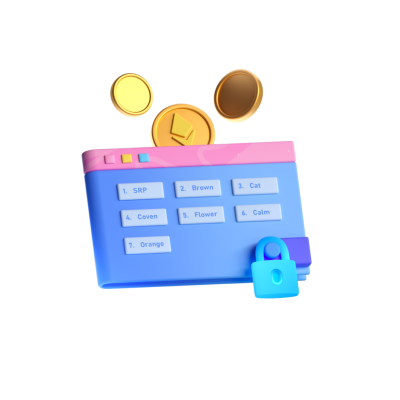The Era of Digital Identity

Digitization is changing the world. As digital technology advances, storing and accessing your personal information becomes easier and more secure. Long gone are the days of storing the paper trail of your life in a bulky filing cabinet; we are increasingly documenting our identity digitally.
What would it be like if all these pieces of information were owned and controlled by you foremost (not other entities), located in one place, and accessible? This technology exists, and is evolving each day. In web3, new ways of thinking about identity are being reimagined to address the next phase of digital identity.
This technology exists, and is evolving each day. In Web3, new ways of thinking about identity are being reimagined to address the next phase of digital identity.

Your Secret Recovery Phrase and your identity
Your crypto wallet allows you to store the information that identifies you in one place. When you create your wallet, you are given 12 words known as your Secret Recovery Phrase (SRP). The SRP is typically 12 English words that look something like this (note, this is not a real Secret Recovery Phrase):
witch / brown / cat / coven / bollywood / flower / bottle / phone / orange / camper / light / ear
These 12 words are the seed of your digital identity and are used to generate the keys that grant you access to your wallet. The same way you wouldn't give away your bank account PIN number, you wouldn't give away these 12 words: anyone with your SRP will be able to access your wallet and all of the assets held within it. Like at any point in history, where money is involved, so too are bad actors, so it’s important to stay vigilant. To protect your identity and digital assets, you must protect your Secret Recovery Phrase.

Using your identity: Your Public Address
Once you’ve created your wallet, your public address, often referred to as your public key, identifies all the transactions associated with you. A public wallet address is a string of letters and numbers that represents your account, similar to a bank account number.
It looks something like this:
0xd8da6bf26964af9d7eed9e03
You can feel free to share your public address, but do keep in mind that if someone searches for your address in a blockchain explorer like Etherscan, they can see the entire history of transactions associated with it. This long string of letters and numbers can be difficult to memorize, although if you like doing that sort of thing, we won’t judge. There are tools to make your account address easier to remember, like Ethereum Name Service (ENS). ENS allows you to register a .eth name and link it directly to your wallet address, websites, and domains.
Similar to email addresses, ENS names are unique and one of a kind. An example of this is vitalik.eth — which actually refers to the public address above. Once registered, nobody else can own the same .eth name unless you sell or transfer it. As soon as you link the ENS to your account, you can provide your ENS in place of that long string of letters and numbers when conducting transactions.
Whether it's research departments in major tech companies like IBM and Microsoft, global standards bodies like the World Wide Web Consortium (W3C), or Ethereum ecosystem innovators like Consensys, people around the world are working on bridging web3 and traditional identity systems, such as those used for traveling, residency, voting, and social security.
The field of digital identity is being thoughtfully and actively researched. Here are just a few examples of the questions being considered by those creating the next phase of the World Wide Web:

What are the ways we can ensure a wallet belongs to its rightful owner and represents a unique individual? How can a user's data travel with them throughout their life — online and offline? How can a person's identity and activities be verified accurately and securely without relying on a centralized authority?
Expect rapid advancement over the next few years as the creation, storage, and management of digital identity is revolutionized by web3.
Remember, your Secret Recovery Phrase is the root of your identity in web3. Write it down, keep it safe, and do not share it with anyone: not your sister, not your accountant, especially not your tattoo artist.
The Era of Digital Identity
 01
01Secret Recovery Phrase (SRP) is the core of my web3 identity.
 02
02SRP needs to be written down and placed in a secure location. An SRP is similar to the pin number to your bank card, you would not want to give it to anyone else or let others see it.
 03
03The SRP generates my public account number that is similar to a bank account number, it's how I'm associated with publicly on the blockchain.
Ready to take the next step?
Explore MetaMask
